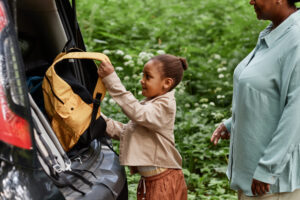As we begin this holiday season, I reach out to encourage parents to continue cooperating with each other to ensure that children have safe, healthy parenting time. Although I do not know exactly what we will experience in the upcoming weeks, there is no doubt that the holidays will feel different this year. During this time of uncertainty and stress, it is even more important that parents focus on what is best for their children. Leaders of the American Academy of Matrimonial Lawyers and the Association of Family and Conciliation Courts created the following guide, “Navigating the Holidays with COVID-19: Create a Roadmap for Success”. It is my hope that these tips will help you prepare for the holidays. I wish you all the best during this holiday season.
John D. Casey
Chief Justice
Massachusetts Probate and Family Court
Navigating the Holidays with COVID-19: Create a Roadmap for Success
The following are useful tools to help divorced/separated parents sharing custody get through the upcoming holidays in the midst of a continuing pandemic with a minimum of conflict and stress.
1. PLAN EARLY:
If there is one piece of advice you take away from these guidelines, it has to be this one. If there was ever a holiday season that could not be successfully navigated by the seat of your pants at the last minute, it is this season. Consider travel logistics, your holiday traditions, events with family and friends and the parenting time schedule, as usual. Include an accurate assessment of applicable guidelines and possible tracing requirements and quarantine times based on protections needed in each household.
2. FOLLOW THE RULES OF THE ROAD:
Stick to your parenting plan or schedule as much as you can, if there is one. If not, start working out a plan. Communicate with your co-parent as soon as possible if you think your customary schedule, family gatherings or travel arrangements will have to change because of the virus.
3. AGREE ON A DESTINATION:
Be straightforward with each other about your goals for the holidays. Discuss how to have a holiday that is both happy and safe for everyone. Look carefully at the level of disease at any location where you might plan to go and also where you live. You have to consider if you could be carrying the risk from your home to another part of the country, as well as the infection and positivity rates present in the community you will be visiting. Will you be among people who are carefully observing the recommendations and rules (masks, social distancing, hand washing)?
4. PLAN YOUR ROUTE TOGETHER:
Talk about the where, when and how. Agree on how to proceed if you disagree. Find ways to resolve disputes with each other, a trusted advisor, a mediator or a parenting coordinator—always a preferable alternative to going to court. If the dispute continues, consider reaching out to a mediator, with or without an attorney, to resolve the issues before seeking court intervention.
5. DON’T BE AFRAID TO STOP AND ASK FOR DIRECTIONS:
Your particular situation may benefit from a consultation with an expert, who might be the family pediatrician (if the point of dispute involves health risks), a family therapist, or your lawyer.
6. YIELD TO HAZARD SIGNS:
Be prepared to abide by local, state and national instructions regarding health and safety as they are updated.
7. SLOW DOWN IF THERE IS CONSTRUCTION OR AN ACCIDENT AHEAD:
Be willing to take a step back, slow down and communicate about any new concerns that may arise related to health and safety.
8. BE OPEN TO ALTERNATIVE ROUTES:
This year is going to be an exception for everyone, not just coparents. Everybody is concerned about doing the right thing, which will lead inevitably to finding new ways to gather and celebrate. For some it will mean get-togethers only on Zoom; for others, there will be gatherings of limited size and limited time, with masks and social distancing. Consider holding any gathering outside, if the weather permits. If you must be indoors, good ventilation with doors and windows open is a must. Social and family connections will have to be balanced by safe behaviors and mitigating risk.





